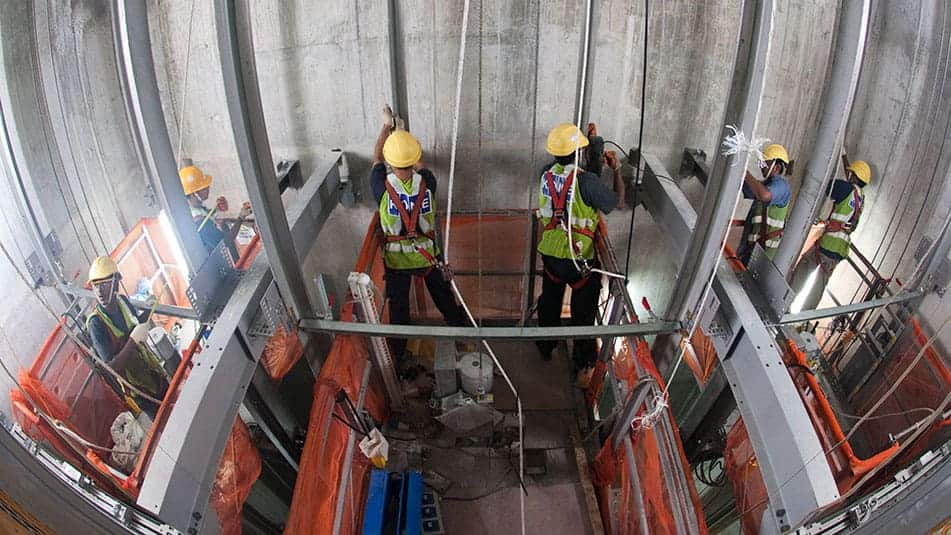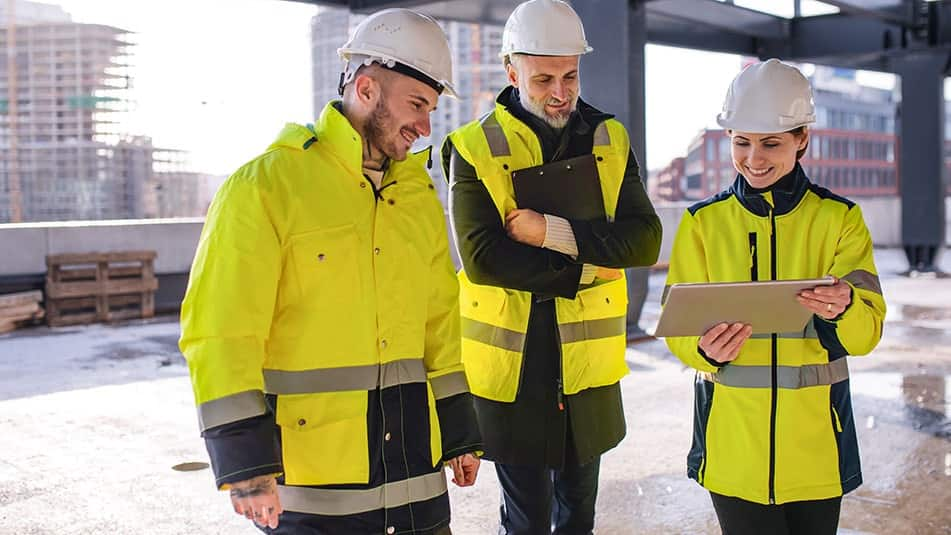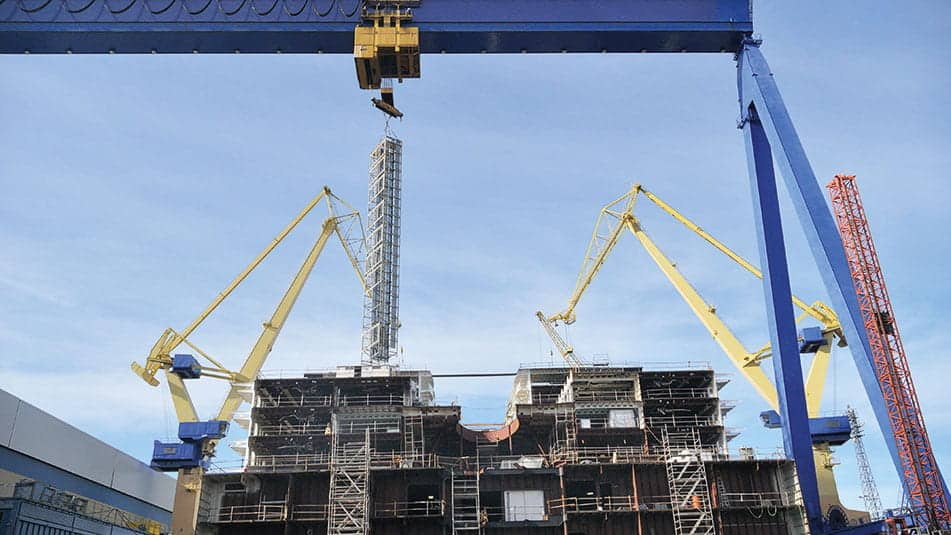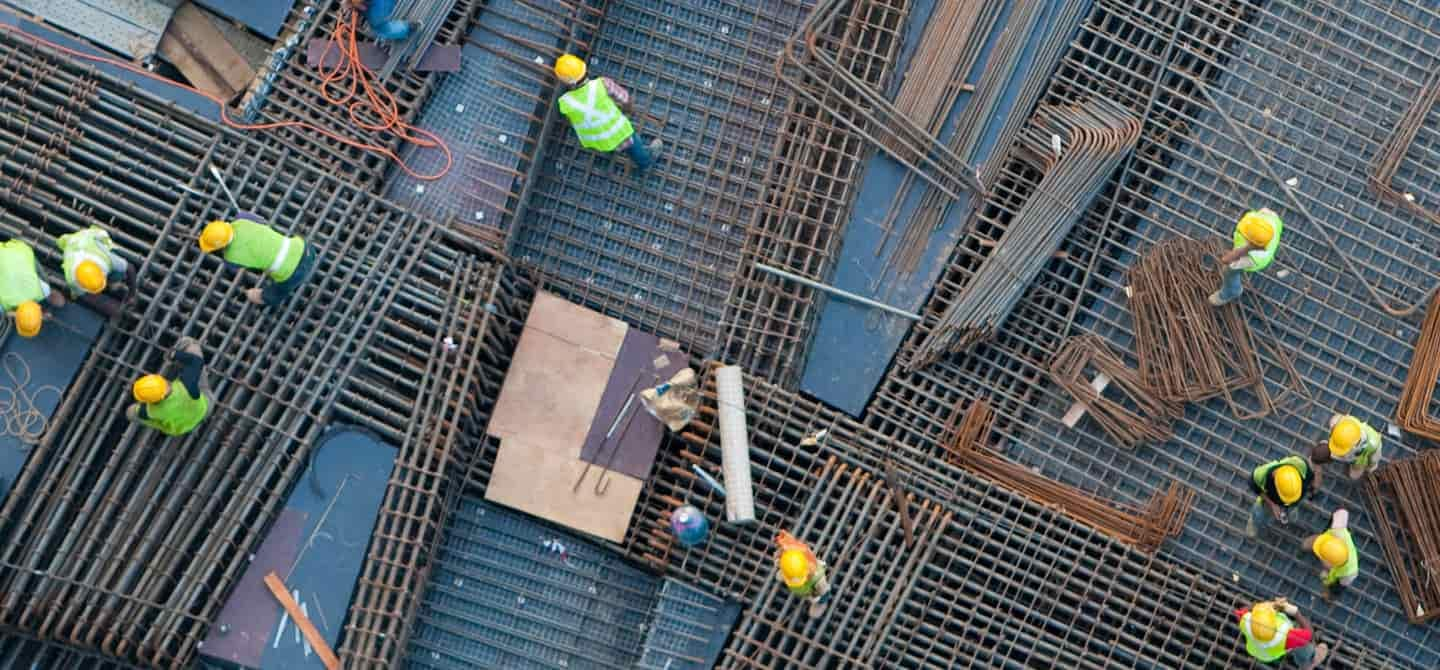Če si ogledate sodobne, visokotehnološke zgradbe današnjega časa, boste morda presenečeni, ko veste, da pod bleščečo novo zunanjostjo proces gradnje še vedno spremlja veliko enakih glavobolov, zastojev in pasti, ki že desetletja pestijo industrijo .
Pravzaprav se je produktivnost v gradbeništvu v 20 letih po podatkih svetovalca McKinsey izboljšala le za 1 % v primerjavi s 3,6 % v proizvodnem sektorju.
Ne glede na to, ali ste odgovorni za majhno zgradbo ali večjo visokogradnjo, vsak dan šteje za gradbeni projekt in že majhni zastoji lahko zmotijo celoten urnik in projekt preseže proračun. Prekoračitve so lahko drage za strani, vključene v projekt, lahko povzročijo izgubo posla za najemnike in končne uporabnike ter lahko povzročijo velike težave vsem, ki živijo ali delajo v bližini.
Na srečo pa obstajajo načini, kako lahko odpravite draga ozka grla v procesu gradnje – in obstaja veliko možnosti za ogromne prihranke pri stroških z uporabo pametnih, novih načinov gradnje. Preberite o petih načinih, kako povečati produktivnost in pomagati pripeljati svoje projekte do konca hitreje in učinkoviteje kot kdaj koli prej.

1. Z gradbenim dvigalom, ki spreminja pravila igre, se že od samega začetka postavite vertikalno.
Vertikalno premikanje delavcev, materialov in orodij na gradbišču je velik glavobol za mnoge vodje projektov. Žerjavi, dvigala in zunanja dvigala so počasna, draga in se v slabem vremenu nanje ni mogoče vedno zanesti.
KONE JumpLift, ki spreminja igro, se izogne tem težavam in lahko skrajša čas gradnje in proračun. Sistem je notranje dvigalo, ki izkorišča obstoječi dvižni jašek stavbe in se razteza navzgor, ko vaša struktura raste. Stavba ne potrebuje strehe – kar pomeni, da je JumpLift mogoče namestiti blizu začetka projekta in je odporen na močan veter in dež.
Uporaba JumpLift – tudi na nizkih stavbah – lahko skrajša tedne ali celo mesece časa gradnje. Na Citic Tower v Pekingu, je JumpLift prihranil prijavljenih 320.000 delovnih ur, rešitev pa je bila izbira projektnih vodij na ikoničnem Hotel Marina Bay Sandsv Singapurju. Medtem je JumpLift prispeval k temu, da se je trajanje projekta prepolovilo pri srednje visoki stanovanjski stavbi v Okrožje Kalasatama v Helsinkih.
JumpLift je zdaj na voljo za zgradbe vseh velikosti, ne le za nebotičnike, pri čemer je KONE edino podjetje, ki ponuja certificirano rešitev za to vrsto tehnologije v domeni nizkih in srednjih stolpnic.
Nadaljnji prihranki izhajajo iz dejstva, da dvigalo v času gradnje služi tudi kot osebno dvigalo stavbe. Ob koncu gradnje se zaščitna obloga odstrani iz notranjosti dvigala, kar razkrije sijoče novo dvigalo, pripravljeno za stanovalce stavbe.

2. Z ustreznimi orodji za upravljanje gradbenih projektov, poskrbite, da bodo vsi skupaj delali pametneje.
Posamezni izvajalci so odgovorni za različne elemente vsakega projekta in običajno delajo neodvisno drug od drugega, zato lahko kakršne koli zamude povzročijo zamude v nadaljevanju. Povezovanje vseh podizvajalcev od samega začetka, da bi ustvarili projektno ekipo, je ključnega pomena za skupno reševanje težav.
Tudi tu lahko bolj standardiziran pristop k vodenju projektov dela čudeže. Vitke metodologije, kot je npr Sistem Last Planner® (LPS), si prizadevajo narediti poteke dela bolj predvidljive in zanesljive, kar olajša izpolnjevanje urnika in proračuna. Ko so pri velikem naftnem in plinskem projektu uporabili integrirana orodja za načrtovanje, je po McKinseyju produktivnost narasla za 70 %.

3. Bolje izkoristite podatke za pretok ljudi, orodij in materialov
Svetovalci McKinsey so izračunali, da je le tretjina časa gradbenih delavcev porabljena produktivno, ure pa so izgubljene bodisi za potovanje po gradbišču bodisi za čakanje na materiale in orodja. Medtem ocenjeno 95% podatkovki jih imajo gradbena podjetja na voljo, zavržejo. Kaj pa, če bi lahko uporabili podatke, da bi bili delovni procesi čim bolj učinkoviti, in ugotovili morebitne zastoje pri projektu?
KONE je nenehno uvaja inovativni načini uporabe podatkov za pospešitev gradnje, strankam pa že pomagamo pri uporabi podatkov v realnem času za boljše razumevanje pretoka materialov in ljudi na lokaciji. Podatki bi lahko vodjem gradbišč pokazali, da bi bilo bolj učinkovito imeti vmesno skladišče v 10. nadstropju namesto v sedmem nadstropju, kar bi omogočilo optimizacijo časa gradnje dvigal in čim manjše čakanje.
4. Povežite se, da bo vaše gradbišče v pogonu
Vsaka rešitev za premikanje stvari gor in dol po gradbišču mora biti robustna in zanesljiva. Ko dvigala ali žerjavi prenehajo delovati, se gradnja upočasni ali ustavi. Digitalne rešitve in rešitve v oblaku KONE zagotavljajo, da bodo dvigala JumpLift še naprej delovala v najtežjih pogojih .KONE 24/7 Connected Services™pomaga povečati čas delovanja dvigal z izkoriščanjem umetne inteligence in zbiranjem ključnih meritev za prepoznavanje in ukrepanje pri morebitnih težavah, preden se pojavijo - in te prednosti zdaj veljajo tudi za uporabo v času gradnje.
Vsak premik, vsako odpiranje vrat, vsak postanek se zabeleži – kar pomeni, da lahko izkušeni serviserji opazijo in odpravijo morebitne težave, preden vplivajo na vaš urnik na lokaciji.

5. Sprejmite modularnost z montažo
Modularna stanovanja, kjer so elementi stavbe vnaprej ustvarjeni izven kraja gradnje, so bila nekoč sinonim za nizkokakovostne soseske, ki so bile kopije v velikem delu Evrope. Ampak modularnost hitro postaja privlačna, stroškovno učinkovita in trajnostna alternativa, ki ne le poenostavi gradbene projekte, ampak omogoča tudi prilagajanje glede na spremembe potreb.
Z montažnimi deli vaše zgradbe so hitrejši, varnejši in bolj predvidljivi projekti. KONE je pred kratkim sodeloval pri inovacijah modularnega koncepta dvigala v 17-nadstropnem stanovanjskem naselju v Londonu. Namestitev dvigala je v primerjavi z običajnimi tedni trajala le nekaj ur, s čimer smo prihranili prostor in naredili delovne pogoje na mestu varnejši.
